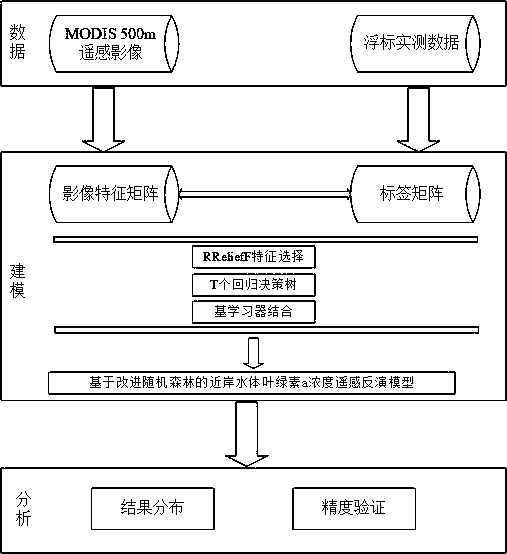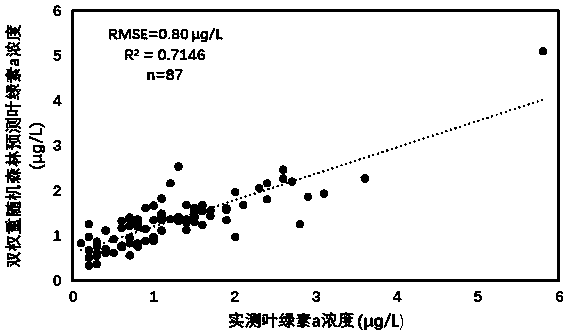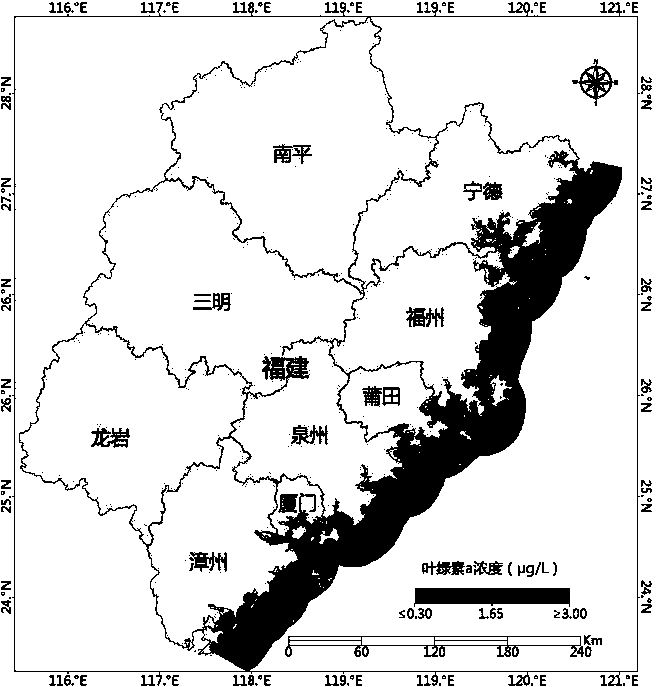An improved random forest-based remote sensing inversion method for the concentration of chlorophyll a in an offshore water body
A random forest and remote sensing inversion technology, applied to computer components, material analysis through optical means, measuring devices, etc., can solve problems such as unsatisfactory results
- Summary
- Abstract
- Description
- Claims
- Application Information
AI Technical Summary
Problems solved by technology
Method used
Image
Examples
Embodiment Construction
[0047] The present invention will be further described below in conjunction with the accompanying drawings and embodiments.
[0048] Please refer to figure 1 The present invention provides a method for remote sensing inversion of chlorophyll-a concentration in coastal waters based on improved random forest, comprising the following steps:
[0049] Step S1: Obtain the time series of original remote sensing images of the study area (the image acquisition time in this example is from May 2017 to May 2018), and perform geometric correction, area clipping, radiometric calibration, atmospheric correction and other presets on the remote sensing image data. Processing, to obtain the spectral reflectance of ground objects; sort out the obtained buoy data, and screen the measured abnormal values according to the water quality information released by the Fujian Ocean Forecasting Station.
[0050] Specific steps are as follows:
[0051] Step S11: Collect the required time series image...
PUM
 Login to View More
Login to View More Abstract
Description
Claims
Application Information
 Login to View More
Login to View More - Generate Ideas
- Intellectual Property
- Life Sciences
- Materials
- Tech Scout
- Unparalleled Data Quality
- Higher Quality Content
- 60% Fewer Hallucinations
Browse by: Latest US Patents, China's latest patents, Technical Efficacy Thesaurus, Application Domain, Technology Topic, Popular Technical Reports.
© 2025 PatSnap. All rights reserved.Legal|Privacy policy|Modern Slavery Act Transparency Statement|Sitemap|About US| Contact US: help@patsnap.com



